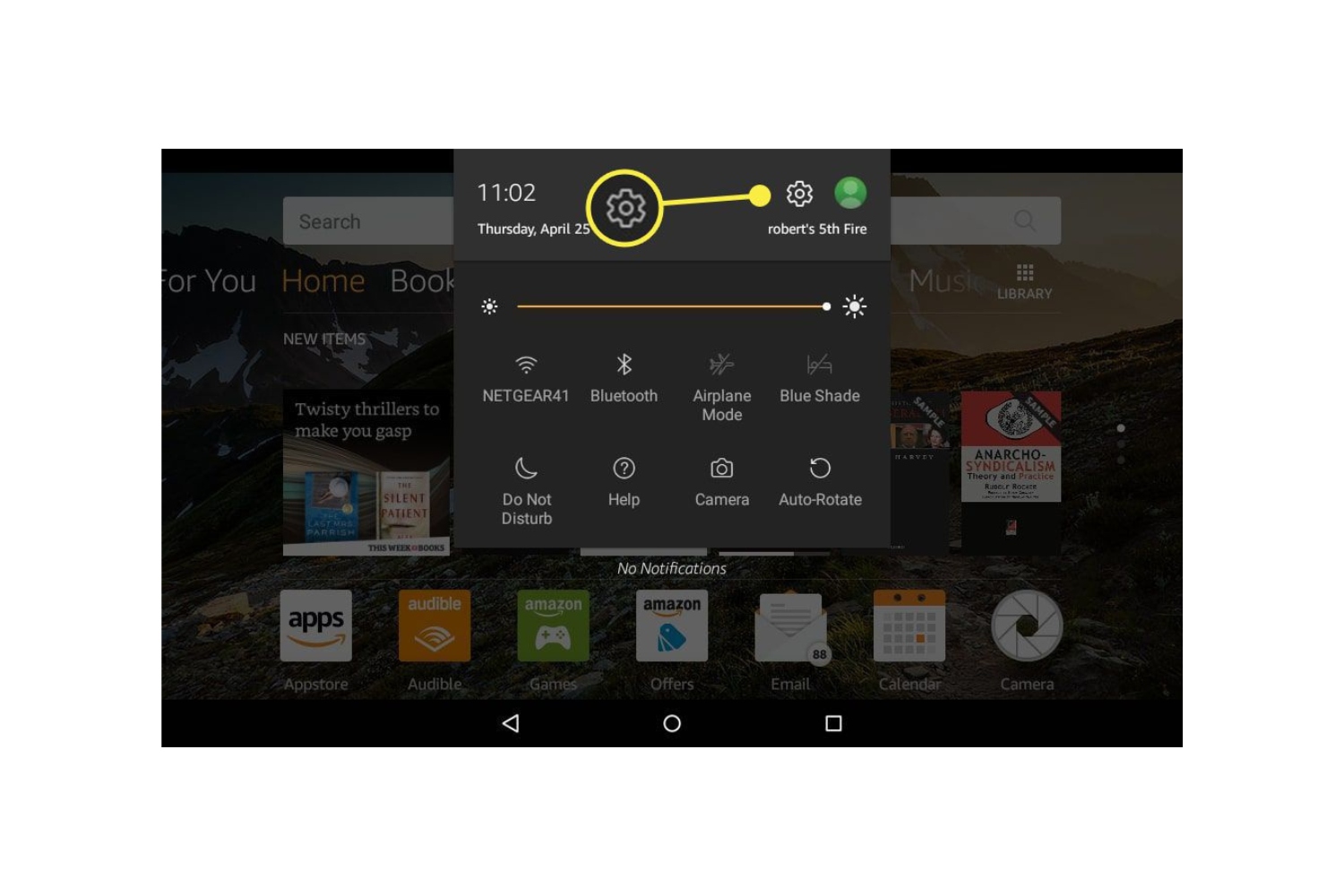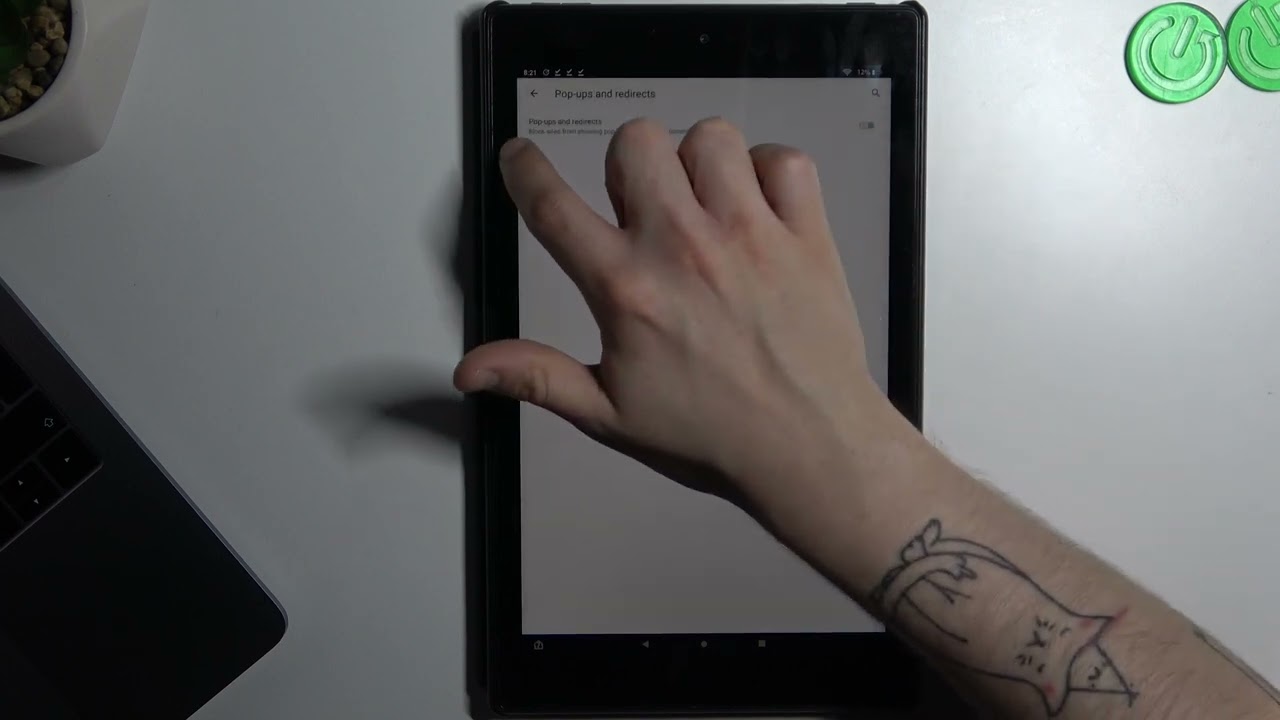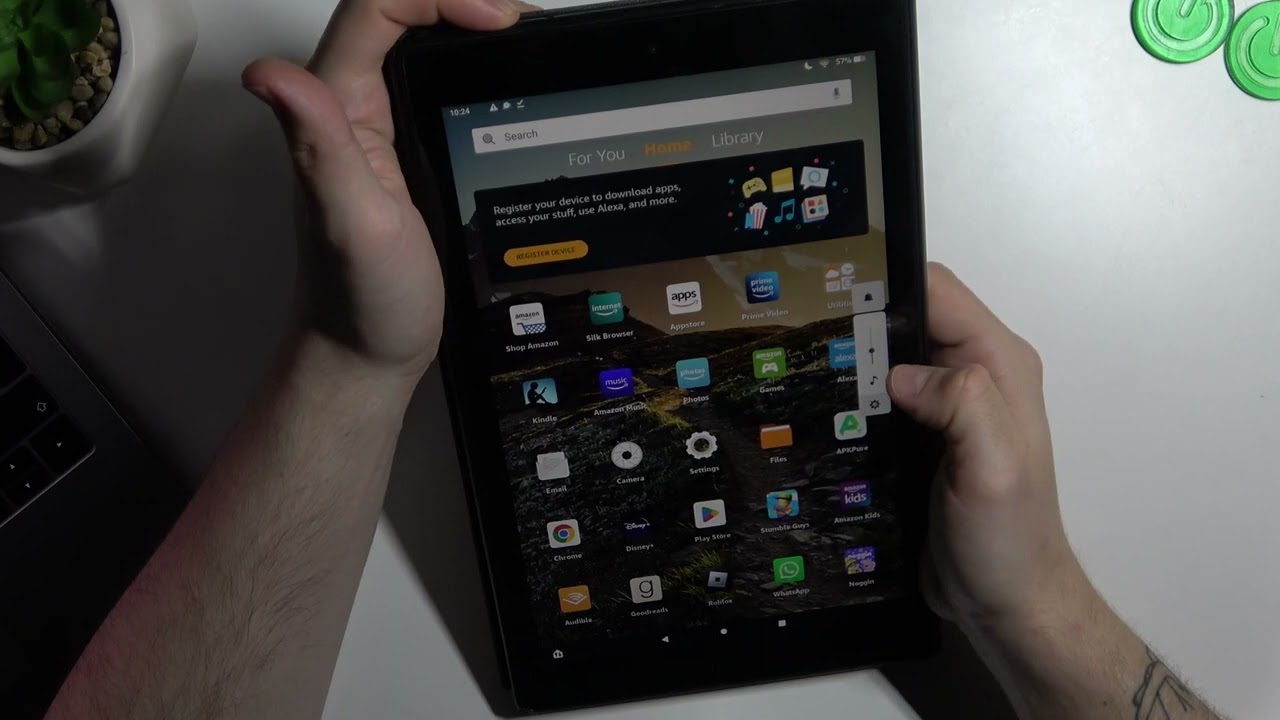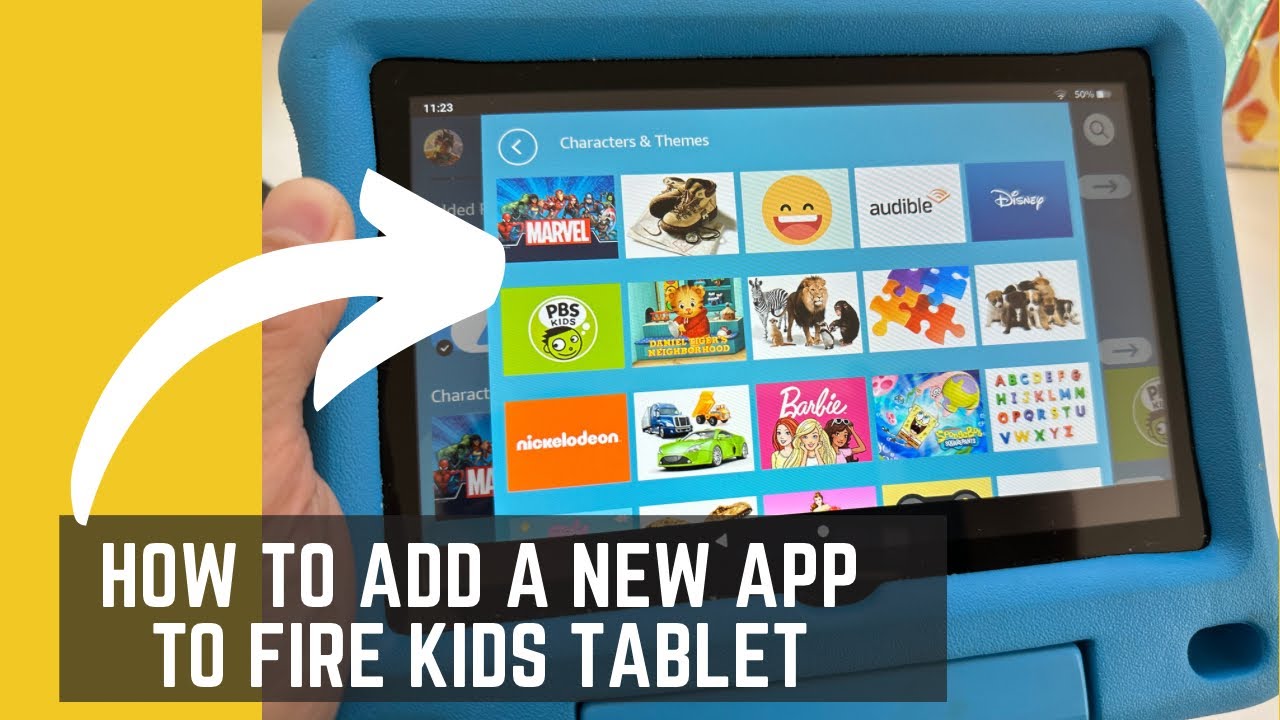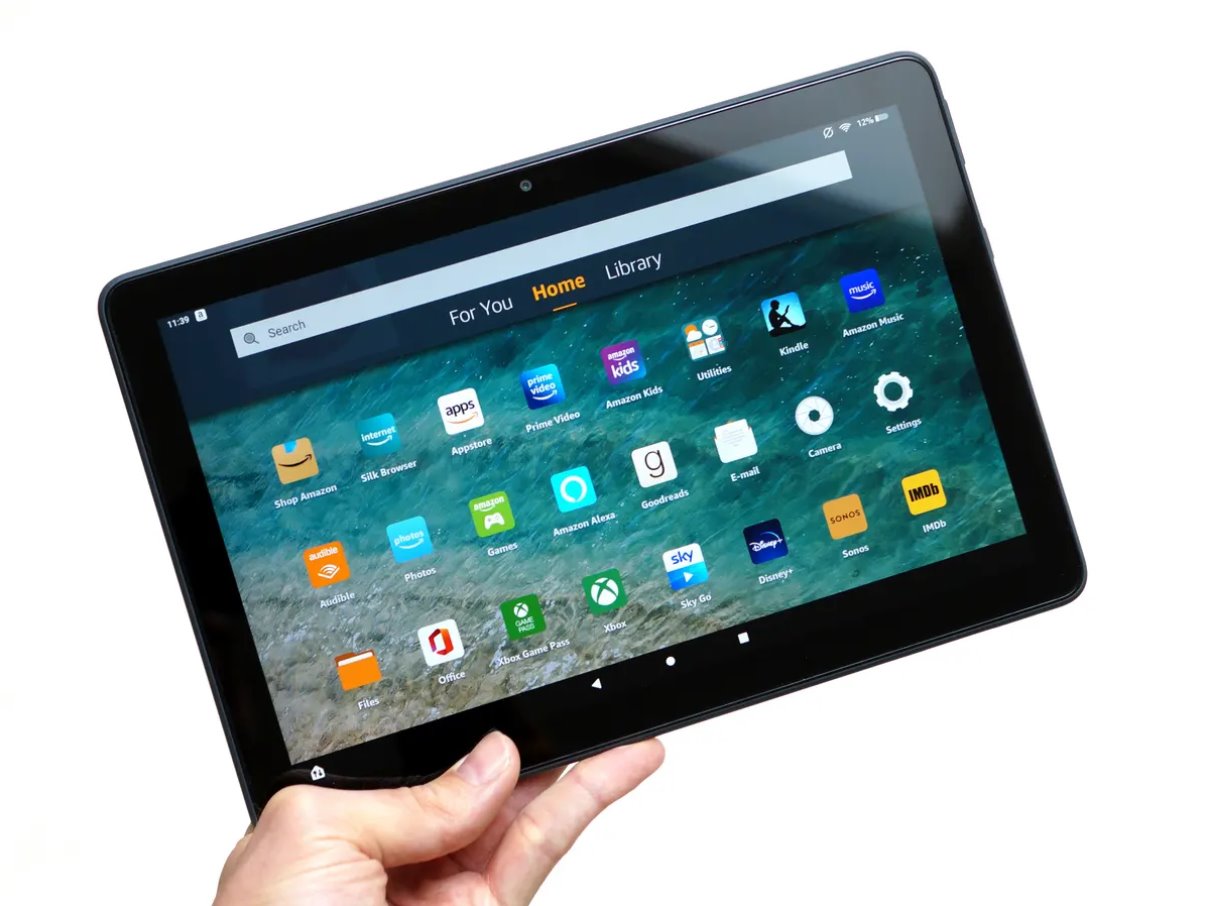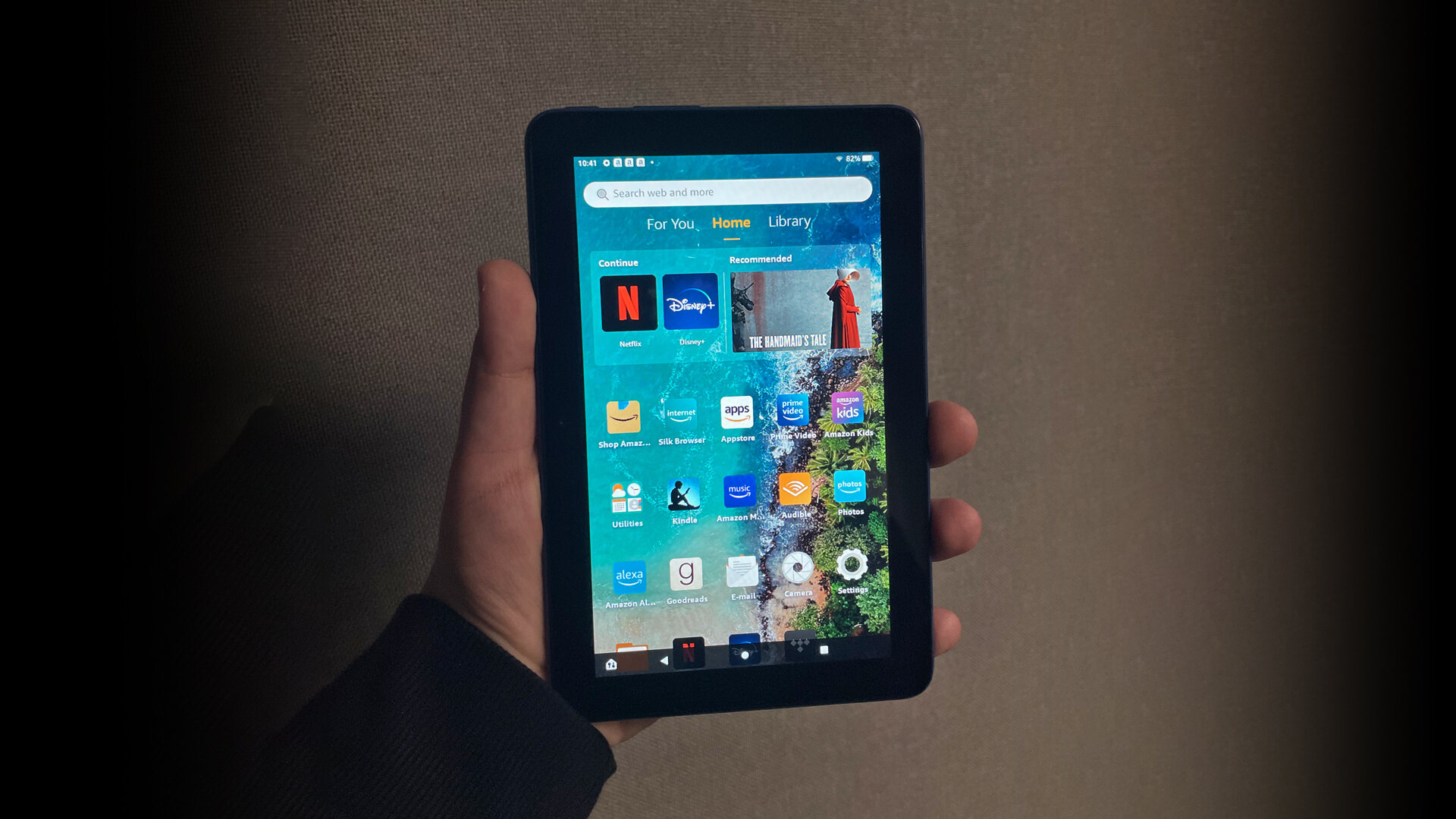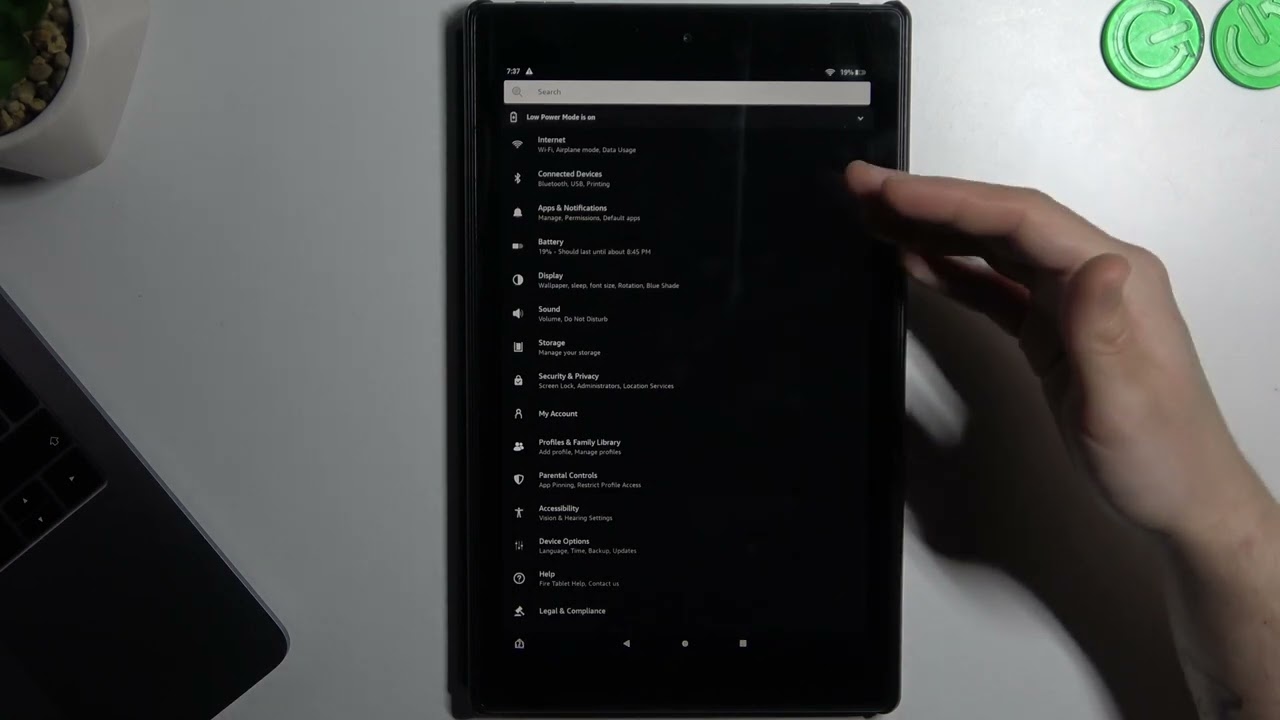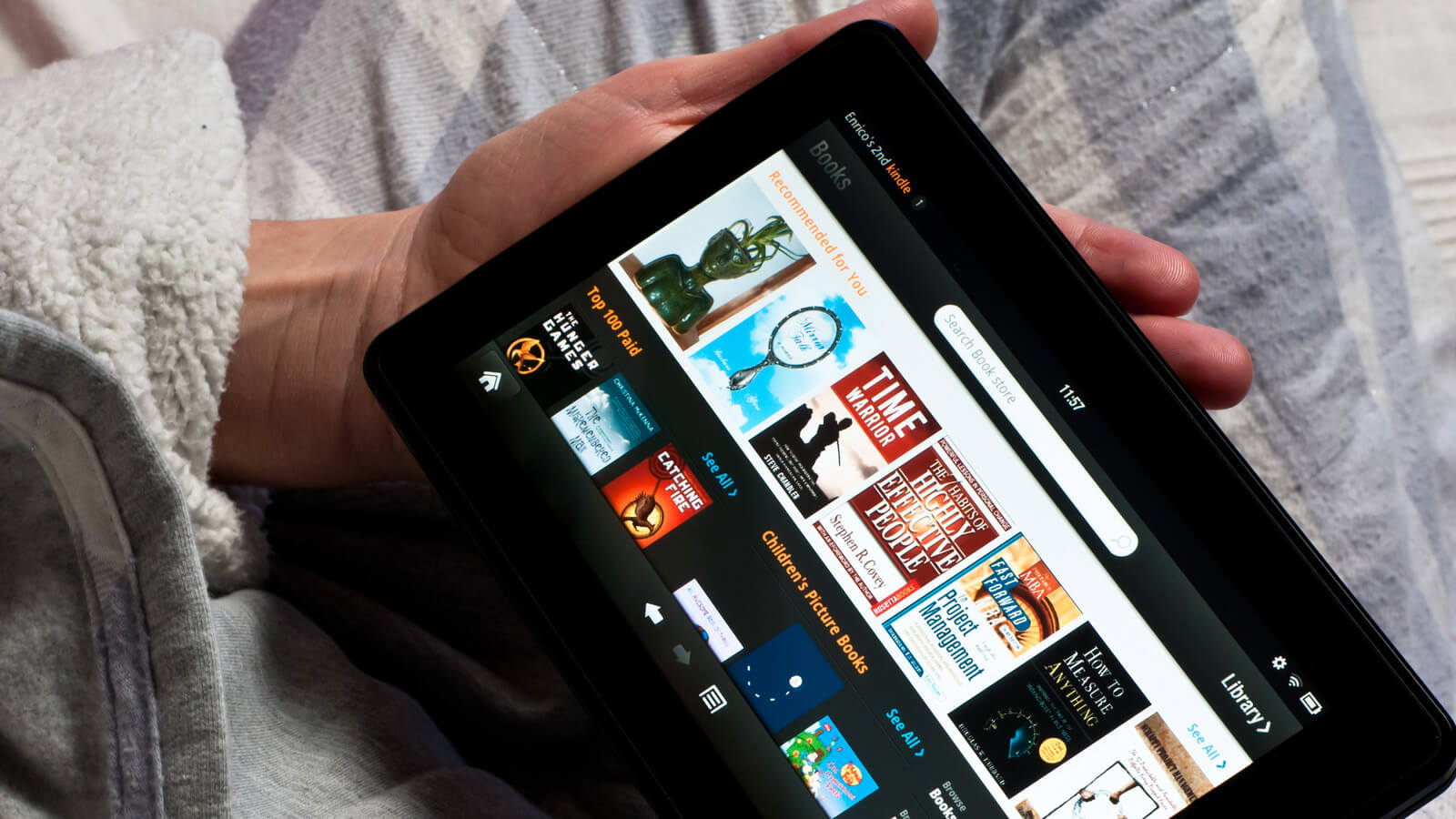Introduction
Welcome to our guide on how to find settings on your Fire Tablet! As a user, it’s important to familiarize yourself with the settings menu in order to customize your device and optimize its performance. The settings menu allows you to adjust various features, such as Wi-Fi, display, sound, battery, storage, apps, security, accessibility, sync, and device options.
By accessing the settings, you can personalize your Fire Tablet according to your preferences, making it a more seamless and tailored experience for you. Whether you want to connect to a Wi-Fi network, adjust the screen brightness, tweak the sound settings, optimize battery usage, manage installed apps, enhance security and privacy, enable accessibility features, or explore various device options, this guide will walk you through each step.
It’s worth noting that the settings menu may vary slightly depending on the model and version of your Fire Tablet. However, the general layout and options discussed in this guide should be applicable to most Fire Tablet devices.
So, if you’re ready to take control of your Fire Tablet and discover all the customization options it has to offer, let’s dive into the settings menu and explore all its features in detail.
Accessing the Settings Menu
To begin customizing your Fire Tablet, you’ll first need to access the settings menu. Follow the steps below to navigate to the settings:
- On the home screen, swipe down from the top of the screen to open the notification bar.
- Tap on the “Settings” icon, which looks like a gear or a cogwheel. This will open the settings menu.
Alternatively, you can directly access the settings menu by tapping the “Settings” app icon on your home screen or by asking Alexa to open settings.
Once you’re in the settings menu, you’ll see a list of different options for customizing your Fire Tablet. The settings menu is organized into various sections, each containing a specific category of settings. Let’s explore each section in detail in the following sections of this guide.
It’s important to note that some settings may have submenus or options that can be accessed by tapping on them. These submenus allow you to fine-tune various settings and preferences within each category.
Now that you know how to access the settings menu, you’re ready to dive into the different settings available on your Fire Tablet. In the following sections, we’ll explore the Wi-Fi settings, display settings, sound settings, battery settings, storage settings, app settings, security and privacy settings, accessibility settings, sync settings, and device options.
Wi-Fi Settings
Wi-Fi settings allow you to connect your Fire Tablet to the internet and manage your wireless network connections. Here’s how you can access and configure the Wi-Fi settings:
- Open the settings menu by following the steps outlined in the previous section.
- Tap on the “Wi-Fi” option. This will display a list of available wireless networks.
- Toggle the Wi-Fi switch to the “On” position if it’s not already enabled.
- Select your preferred Wi-Fi network from the list. If your network requires a password, enter it when prompted.
- Wait for your Fire Tablet to establish a connection to the selected network. Once connected, you’ll see a checkmark next to the network name.
In the Wi-Fi settings menu, you can also access additional options and manage your network connections:
- Forget Network: If you no longer want your Fire Tablet to remember a specific Wi-Fi network, tap on the network name and select “Forget” or “Forget Network.”
- Advanced Wi-Fi Settings: This option allows you to customize advanced Wi-Fi settings, such as proxy settings, IP address configurations, and manual network selection. To access these settings, tap on the three-dot menu icon in the top-right corner and select “Advanced.”
It’s important to regularly check and manage your Wi-Fi settings to ensure a reliable and secure connection. If you’re experiencing connectivity issues, you can try restarting your Fire Tablet, toggling the Wi-Fi switch on and off, or moving closer to the router.
Now that you know how to access and configure Wi-Fi settings on your Fire Tablet, you can connect to available networks, manage connections, and enjoy seamless internet access on your device.
Display Settings
The display settings on your Fire Tablet allow you to customize the appearance and behavior of the screen. Here’s how you can access and adjust the display settings:
- Open the settings menu by following the steps mentioned earlier.
- Tap on the “Display” option. This will open the display settings menu.
Within the display settings, you’ll find various options that you can customize according to your preferences. Some of the key display settings include:
- Brightness: Adjust the brightness of your Fire Tablet’s screen by moving the slider. You can also enable “Adaptive Brightness” to allow your device to automatically adjust the screen brightness based on ambient lighting conditions.
- Screen Timeout: Set the duration after which your Fire Tablet’s screen will automatically turn off when inactive.
- Font Size and Style: Customize the size and style of the text displayed on your device.
- Blue Shade: This feature reduces the exposure to blue light, which can help reduce eye strain and improve sleep quality.
- Rotation Lock: Enable or disable the automatic screen rotation when you rotate your device.
- Wallpaper: Change the background image of your lock screen and home screen by selecting from the pre-loaded wallpapers or by using your own image.
By adjusting these display settings, you can create a more comfortable viewing experience and personalize the visual aspects of your Fire Tablet.
It’s worth noting that some display settings may vary depending on the specific model and version of your Fire Tablet. However, the core options discussed above should be available on most devices.
Now that you’re familiar with the display settings, you can configure them to suit your preferences and enhance your Fire Tablet’s visual experience.
Sound Settings
The sound settings on your Fire Tablet allow you to customize and control various audio options. Whether you want to adjust the volume, change the notification sound, or enable accessibility features for audio, here’s how you can access and configure the sound settings:
- Open the settings menu as described earlier.
- Tap on the “Sound” option. This will open the sound settings menu.
Within the sound settings menu, you’ll find several options to customize your audio preferences. Some key sound settings include:
- Volume: Adjust the volume level for media playback, notifications, and system sounds by moving the respective sliders.
- Do Not Disturb: Enable “Do Not Disturb” mode to silence all incoming calls, notifications, and alerts. You can customize the duration and allow exceptions for important contacts or specific apps.
- Sound & Haptic Feedback: Configure the haptic feedback intensity and enable or disable sound and vibration for various actions, such as keyboard typing, touch interactions, and system feedback.
- Notification Sounds: Customize the sound that plays when you receive notifications. You can choose from the pre-loaded sounds or select your own audio file.
- Accessibility: Access additional sound-related accessibility options, such as mono audio, closed captioning, and audio balance adjustments. These options ensure an inclusive and personalized audio experience for users with specific needs.
- Advanced Options: Explore advanced sound settings, such as Amazon Music EQ, audio language, and system-wide audio settings.
With these sound settings, you can adjust the audio output, tailor notification sounds to your liking, and enhance accessibility for a more enjoyable audio experience on your Fire Tablet.
It’s important to regularly check and adjust the sound settings according to your preferences and requirements. Whether you’re a music lover, a movie enthusiast, or simply want to personalize your device’s audio output, the sound settings provide the flexibility to do so.
Now that you’re familiar with the sound settings on your Fire Tablet, you can fine-tune the audio experience to suit your preferences and make the most out of your device’s sound capabilities.
Battery Settings
The battery settings on your Fire Tablet allow you to manage and optimize the usage of your device’s battery. By accessing these settings, you can monitor battery usage, enable power-saving features, and improve the overall battery life. Here’s how you can access and configure the battery settings:
- Open the settings menu as described earlier.
- Tap on the “Battery” option. This will open the battery settings menu.
Within the battery settings menu, you’ll find several options to help you manage your device’s battery life. Some key battery settings include:
- Battery Saver: Enable the battery saver mode to extend the battery life by reducing background activity and limiting certain app functionalities when the battery level is low.
- Battery Usage: View detailed information about the apps and services that consume the most battery power. This allows you to identify and manage power-hungry processes effectively.
- Background Activity: Restrict or allow specific apps to use the battery in the background. By limiting unnecessary background activity, you can preserve battery life.
- Sleep Mode: Customize the duration after which your Fire Tablet automatically enters sleep mode when not in use. This helps conserve battery power and extends the device’s standby time.
The battery settings on your Fire Tablet provide you with insights into power consumption and offer tools to maximize battery efficiency. By monitoring battery usage and implementing power-saving features, you can ensure longer usage times between charges.
It’s important to note that battery life can vary based on factors such as screen brightness, app usage, and network connectivity. Therefore, optimizing your device’s battery settings according to your usage patterns and preferences can greatly contribute to a longer battery life.
Now that you’re familiar with the battery settings, you can take control of your Fire Tablet’s battery usage, optimize battery life, and enjoy extended usage times before needing to recharge.
Storage Settings
The storage settings on your Fire Tablet allow you to manage and optimize the storage space on the device. By accessing these settings, you can view storage usage, free up space, and manage downloaded content. Here’s how you can access and configure the storage settings:
- Open the settings menu as mentioned earlier.
- Tap on the “Storage” option. This will open the storage settings menu.
Within the storage settings menu, you’ll find various options to help you manage your device’s storage effectively. Some key storage settings include:
- Storage Usage: View a graphical representation of the storage allocation on your Fire Tablet, categorized by different types of content such as apps, photos, videos, and more.
- App Storage: Manage the storage used by individual apps. You can view the app sizes, clear app data, or uninstall apps to free up space.
- Downloaded Content: Access the list of downloaded files, such as documents, videos, and music. You can delete specific files or clear the entire downloaded content, liberating storage space.
- Device Memory: If your Fire Tablet has expandable storage, such as an SD card, you can manage the storage settings for the external memory card, including formatting it as internal storage or transferring apps and files to it.
By regularly reviewing and managing your device’s storage, you can ensure that you have enough space for new downloads and smooth device performance.
It’s important to note that inadequate storage space can affect your device’s performance and responsiveness. Therefore, periodically assessing your storage usage and freeing up space is crucial.
Now that you’re familiar with the storage settings on your Fire Tablet, you can effectively manage your device’s storage, optimize performance, and ensure a seamless user experience.
App Settings
The app settings on your Fire Tablet allow you to manage and customize various aspects of your installed applications. From controlling app permissions to managing notifications and updates, app settings give you greater control over your device’s apps. Here’s how you can access and configure the app settings:
- Open the settings menu as outlined earlier.
- Tap on the “Apps & Games” option. This will open the app settings menu.
Within the app settings menu, you’ll find a list of all the apps installed on your Fire Tablet. From here, you can explore various options and settings related to your apps. Some key app settings include:
- App Permissions: Control the permissions granted to individual apps. This includes access to your device’s camera, microphone, location, contacts, and more. You can customize these permissions on a per-app basis.
- Notifications: Manage notifications for each app. You can choose to enable or disable notifications, control the type of notifications received, and customize the sounds and behavior of app notifications.
- Auto Updates: Decide whether you want your apps to automatically update or if you prefer to manually update them. Enabling auto-updates ensures you have the latest features and bug fixes, while manual updates give you more control over the app versions.
- Default Apps: Set default apps for specific actions, such as opening web links, playing music, or viewing images. This allows you to personalize your app preferences and streamline your workflow.
- App Profiles: On certain Fire Tablet models, you can create separate profiles for different users. App settings allow you to configure app access and restrictions for each user profile.
By exploring and adjusting these app settings, you can enhance your app experience, maximize privacy and security, and personalize how your Fire Tablet interacts with your installed applications.
It’s important to periodically review and manage your app settings to ensure that your device functions optimally and that your apps align with your preferences and requirements.
Now that you’re familiar with the app settings on your Fire Tablet, you can take control of your installed applications, customize their behavior, and tailor your device’s app experience to suit your needs.
Security & Privacy Settings
The security and privacy settings on your Fire Tablet allow you to safeguard your device and control the privacy of your personal information. By accessing these settings, you can customize security features, manage app permissions, and protect your privacy. Here’s how you can access and configure the security and privacy settings:
- Open the settings menu as mentioned earlier.
- Tap on the “Security & Privacy” option. This will open the security and privacy settings menu.
Within the security and privacy settings menu, you’ll find various options to help you protect your device and maintain your privacy. Some key security and privacy settings include:
- Lock Screen: Configure the lock screen security by selecting a lock method, such as a PIN, password, or fingerprint (if supported by your device). This prevents unauthorized access to your device.
- Screen Lock Timeout: Set the duration after which your Fire Tablet automatically locks the screen when not in use. This adds an extra layer of security in case you forget to manually lock your device.
- App Permissions: Control the permissions individual apps have on your device. You can grant or revoke permissions, such as access to the camera, microphone, location, or contacts, on a per-app basis to protect your privacy.
- Password Protection: Secure sensitive areas of your device, such as app purchases or settings changes, by enabling a password requirement for these actions.
- Privacy Settings: Adjust privacy options, such as data collection, advertising preferences, and Amazon Assistant settings, to customize your privacy preferences.
- Parental Controls: Create and manage profiles for child users, control access to content, set time limits, and block inappropriate apps or websites with robust parental control features.
By configuring these security and privacy settings, you can ensure the safety of your device, protect your personal information, and tailor the privacy levels according to your comfort and requirements.
Regularly reviewing and adjusting these settings is essential to maintaining a secure and private environment on your Fire Tablet.
Now that you’re familiar with the security and privacy settings, you can take control of your device’s security features, protect your privacy, and use your Fire Tablet with peace of mind.
Accessibility Settings
The accessibility settings on your Fire Tablet allow you to customize your device and make it more accessible for users with different needs. These settings include options for visual, auditory, and interaction enhancements. Here’s how you can access and configure the accessibility settings:
- Open the settings menu as mentioned earlier.
- Tap on the “Accessibility” option. This will open the accessibility settings menu.
Within the accessibility settings menu, you’ll find various options to improve the usability and inclusivity of your Fire Tablet. Some key accessibility settings include:
- Screen Reader: Enable the screen reader feature, such as VoiceView, which provides spoken feedback to users with visual impairments, making it easier to navigate and interact with the device.
- Text-to-Speech: Customize the text-to-speech settings to have your Fire Tablet read aloud text on the screen, including eBooks, articles, and notifications.
- Font Size and Style: Make text more readable by adjusting the font size and choosing from different font styles that suit your preferences.
- Color Inversion: Invert colors on the screen to improve readability and reduce eye strain for users with visual impairments or sensitivities.
- Subtitles and Captions: Enable subtitles and captions for videos and media content to ensure accessibility for users with hearing impairments.
- Touch and Hold Delay: Adjust the time required to trigger touch and hold actions, making it easier for users with motor impairments to interact with the device.
These accessibility settings are designed to accommodate users with specific needs, providing them with a more inclusive and user-friendly experience on their Fire Tablet.
It’s important to explore and customize these settings according to your specific needs or those of the intended users, ensuring that the Fire Tablet is accessible and usable for everyone.
Now that you’re familiar with the accessibility settings on your Fire Tablet, you can tailor the device to meet specific needs, improve usability, and enjoy a more accessible experience.
Sync Settings
The sync settings on your Fire Tablet allow you to keep your data and settings up to date across multiple devices. By accessing these settings, you can enable automatic synchronization and ensure that your information is consistently backed up and available. Here’s how you can access and configure the sync settings:
- Open the settings menu as mentioned earlier.
- Tap on the “Sync” option. This will open the sync settings menu.
Within the sync settings menu, you’ll find various options to manage data synchronization for different apps and services. Some key sync settings include:
- Amazon Account: Sync your Amazon account to ensure that your content, such as eBooks, audiobooks, and music, is accessible on your Fire Tablet.
- Contacts, Calendar, and Email: Sync your contacts, calendar events, and email accounts across multiple devices, ensuring that you have the most up-to-date information at all times.
- Photos: Enable automatic synchronization of your photos to a cloud storage service, such as Amazon Photos, to back them up and access them from other devices.
- Documents and Files: Sync your documents and files to cloud storage services, such as Amazon Drive or other compatible providers, for easy access and backup.
- App Data: Enable app data synchronization to ensure that your app settings, preferences, and progress are synchronized across devices.
By configuring these sync settings, you can seamlessly transition between devices while keeping your information consistent and readily available.
It’s important to note that enabling sync settings may consume data and battery power, so you can choose to selectively enable sync for specific apps or services based on your needs.
Now that you’re familiar with the sync settings on your Fire Tablet, you can ensure that your data and settings are synchronized across devices, facilitating a seamless and connected experience.
Device Options
The device options on your Fire Tablet allow you to customize various settings and preferences pertaining to your device itself. From managing storage to resetting the device, these options give you control over the overall functionality. Here’s how you can access and configure the device options:
- Open the settings menu as mentioned earlier.
- Scroll to the bottom of the menu and tap on the “Device Options” or “Device” option. This will open the device options menu.
Within the device options menu, you’ll find several settings that allow you to manage and configure your Fire Tablet. Some key device options include:
- About Tablet: Access detailed information about your device, such as the model, software version, storage capacity, and more.
- System Updates: Check for and install available software updates to ensure your Fire Tablet has the latest improvements, features, and security patches.
- Date & Time: Set the date, time, and time zone for your device. You can choose to set it automatically or manually based on your preference.
- Language & Input: Customize the language settings and select your preferred keyboard and input methods.
- Backup & Restore: Back up your device data and settings to the cloud or restore previously backed-up data, ensuring that your critical information is safe and accessible.
- Reset Options: Factory reset your device, clear app data, or perform a complete erase to restore your Fire Tablet to its original settings.
These device options allow you to personalize and manage the overall settings and functionality of your Fire Tablet.
It’s important to use caution when performing device options that can result in data loss, such as factory resets or erases. Make sure to back up your important data before proceeding.
Now that you’re familiar with the device options on your Fire Tablet, you can configure and manage your device’s settings and preferences to suit your needs and preferences.
Conclusion
Congratulations! You’ve now learned how to navigate and customize the various settings on your Fire Tablet. By accessing these settings, you can personalize your device, optimize its performance, and tailor it to suit your specific needs and preferences.
From accessing the settings menu to configuring Wi-Fi, display, sound, battery, storage, app, security, accessibility, sync, and device options, you now have a comprehensive understanding of how to take control of your Fire Tablet.
Remember, regularly reviewing and adjusting these settings can greatly enhance your device experience and ensure that it’s optimized according to your requirements. Whether it’s connecting to Wi-Fi networks, adjusting screen brightness, managing app permissions, or protecting your privacy, these settings empower you to make your Fire Tablet your own.
Now that you’ve mastered the settings, feel free to explore and experiment with them to find the optimal configuration that suits your needs. Don’t hesitate to refer back to this guide whenever you need a refresher on any of the settings discussed.
We hope that this guide has provided you with the knowledge and confidence to fully utilize the settings on your Fire Tablet. Happy customizing and enjoy your personalized Fire Tablet experience!







